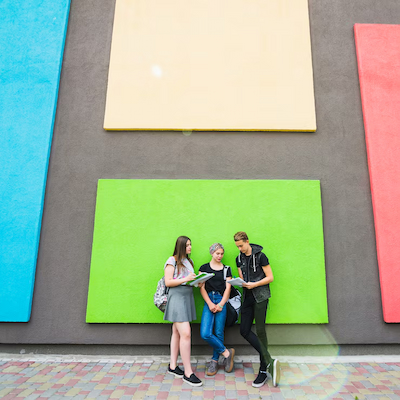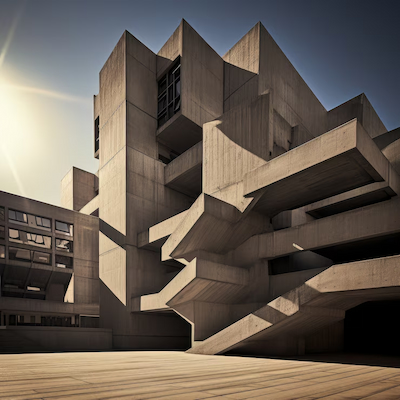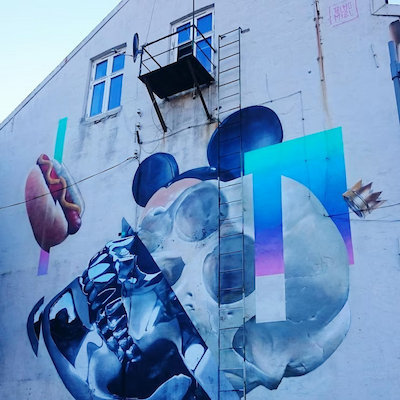
Urbanism and public art are topics that, when combined, reveal a new way of interacting with urban space. A city, often seen merely as a collection of buildings and streets, can become an open-air gallery where art plays a vital role in shaping local identity and culture. In this context, public art is not just decoration, but a form of expression that engages with history, society, and the surrounding environment.
The practice of integrating art into urban spaces has gained momentum in recent decades, reflecting a shift in how we think about cities. Artistic interventions can be found in squares, walls, parks, and even buildings, offering new experiences for both residents and visitors. By transforming the urban environment into a space of artistic appreciation, cities become more vibrant and welcoming, encouraging community engagement and participation.
How Urban Interventions in Public Art Work
Urban interventions in public art function as a bridge between artists and the community. Artists are invited to create works that connect with the place, taking into account its history, culture, and the needs of its people. This process usually begins with thorough research, during which artists study the space, talk to residents, and seek to understand the essence of the location. This immersion is essential to ensure the final work is meaningful and relevant to the community.
Once the research is complete, artists develop their projects, which can vary widely in form and technique—from murals and sculptures to interactive installations. The execution of the work is often carried out in collaboration with the community, involving residents in the creative process. This partnership not only strengthens social bonds but also ensures that the art reflects the diversity and plurality of the local population.
In addition, urban interventions are frequently coordinated with city authorities and urban planners. This collaboration is essential to ensure that the artworks integrate with the broader urban plan and comply with city regulations. In this way, public art is not an isolated element but part of a larger project aimed at improving urban quality of life.
Finally, it is important to note that public art interventions are not static. They can evolve over time, with the possibility of being renewed or reinterpreted. This means that the city is always in motion, and public art can accompany these changes, reflecting the ongoing social and cultural transformations.

Benefits of Integrating Public Art into Urban Planning
Integrating public art into urban planning offers a variety of benefits that go far beyond aesthetics. First, public art has the power to revitalize urban areas, transforming neglected spaces into places of gathering and interaction. By introducing artwork into previously overlooked locations, the city gains new energy and attracts people, boosting the local economy and encouraging tourism.
Another advantage is the strengthening of cultural identity. Public art can express local traditions and histories, allowing communities to see themselves in the works. This not only values local culture but also promotes a sense of pride and belonging among residents. Through art, people can connect with their roots and share their stories.
Moreover, public art plays an important role in education and social awareness. Many artworks address current themes such as sustainability, diversity, and inclusion, sparking reflection and dialogue among citizens. By interacting with such works, individuals are encouraged to think critically about social issues and get involved in community actions.
Finally, public art contributes to mental health and well-being. Urban environments that incorporate art tend to be more pleasant and inspiring, creating feelings of happiness and satisfaction. Art offers moments of pause and contemplation, helping people disconnect from daily stress and reconnect with their surroundings.
How to Turn the City into an Open-Air Gallery
Transforming the city into an open-air gallery is a process that requires planning and collaboration. Here are some ways to make it happen:
Community involvement: For public art to be meaningful, it’s essential to involve the community in the creative process. Organizing workshops and public meetings can help identify what residents want to see in their urban space.
Partnerships with local artists: Encouraging participation from local artists not only supports regional talent but also ensures the artwork reflects local culture and identity. This connection between artist and community is key to a successful project.
Diversity of formats: Public art isn’t limited to murals or sculptures. Interactive installations, performances, and temporary interventions can also be explored. The variety of formats enriches the audience experience and encourages creativity.
Promotion of cultural events: Organizing events such as festivals, exhibitions, and guided tours that celebrate public art can attract visitors and spark local interest. These events also offer a platform for artists to present their work.
Maintenance and care: Once installed, public art must be preserved. This includes regular cleaning, repairs, and in some cases, renewal. Maintaining the artwork is essential for the longevity and integrity of the project.
Use of technology: Technology can enhance public art experiences. Augmented reality apps, for example, can offer interactive features, allowing visitors to learn more about the artwork and its creators.
These strategies can help build a more vibrant and welcoming urban environment, where art and culture are ever-present. Turning the city into an open-air gallery is an invitation to appreciate and reflect, fostering a deeper connection between people and their shared space.

Did You Enjoy Learning About Urbanism and Public Art: The City as an Open-Air Gallery?
Learning more about urbanism and public art is a powerful way to understand how these two disciplines intersect to shape not just the physical, but also the emotional and cultural fabric of urban life. When cities are viewed as open-air galleries, they become dynamic, ever-evolving spaces that reflect the identities, histories, and aspirations of their communities. Public art turns streets into stages, walls into canvases, and neighborhoods into living narratives.
By thoughtfully integrating art into public spaces, we go beyond aesthetics—we foster dialogue, spark imagination, and invite people to pause, reflect, and connect. This synergy between art and urban planning has the potential to transform our daily routines into richer, more engaging experiences. It empowers communities to reclaim and reimagine their environments, turning ordinary places into meaningful, participatory landmarks.
Ultimately, this interaction between art and urbanism redefines the way we inhabit the city. It humanizes urban space, nurtures civic pride, and encourages inclusive cultural expression. In doing so, it helps build cities that are not only functional but also soulful—places where creativity and community thrive side by side.
Frequently Asked Questions
What is urbanism and public art?
Urbanism and public art are ways to use the city as a platform for cultural expression and creativity. The city becomes an open-air gallery.
How does public art change urban spaces?
Public art enhances and transforms space. It brings life to the streets and helps people connect.
What is the impact of public art on communities?
Public art brings people together and creates a sense of belonging. It helps you feel like part of the community.
Where can I find examples of public art in the city?
You can find public art in parks, plazas, murals, and even on buildings. The city is full of artistic surprises!
How can I get involved in public art projects?
You can participate through local organizations or community events. Your creativity can help make a difference in the city!

